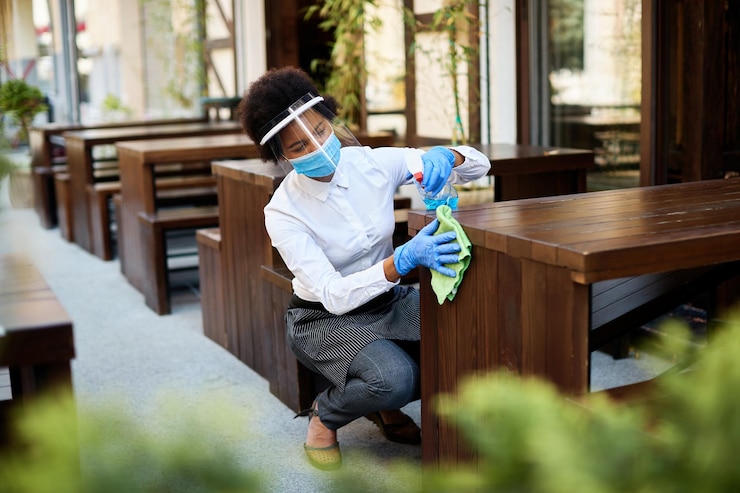
Cleaning in the Age of Pandemics: Ensuring Safety in Uncertain Times
The onset of the 21st century has seen the world grappling with multiple pandemics, from SARS and MERS to the unprecedented global impact of COVID-19. These health crises have not only reshaped our understanding of disease transmission but have also underscored the critical role of cleaning in preventing the spread of pathogens. As we navigate this new age of pandemics, the importance of cleaning has been heightened, evolving from a routine chore to a vital public health measure. This article delves into the significance of cleaning in today’s world, its role in disease prevention, and the best practices to ensure public safety.
The Nexus Between Cleaning and Disease Prevention
Viruses, bacteria, and other pathogens can survive on surfaces for varying durations, making them potential hotspots for disease transmission. Regular and thorough cleaning, especially of frequently-touched surfaces, can significantly reduce the risk of pathogen transmission.
- Surface Transmission: Many pathogens, including the novel coronavirus, can remain viable on surfaces for hours to days. Regular cleaning, followed by disinfection, can effectively neutralize these pathogens.
- Airborne Transmission: While cleaning surfaces is crucial, addressing airborne pathogens is equally important. Proper ventilation, air purification, and regular cleaning of air conditioning systems can mitigate the risk of airborne transmission.
Evolving Cleaning Protocols in the Pandemic Era
The age of pandemics has necessitated a reevaluation and enhancement of traditional cleaning protocols:
- Frequency: High-touch surfaces like doorknobs, railings, and light switches now require multiple cleanings daily, given their potential to harbor and transmit pathogens.
- Products: The emphasis has shifted to using EPA-approved disinfectants proven to eliminate a broad spectrum of pathogens, including pandemic-causing viruses.
- Training: Cleaning personnel are now trained not just in cleaning techniques but also in understanding disease transmission, ensuring that cleaning is both safe and effective.
- Personal Protective Equipment (PPE): The use of masks, gloves, and other protective gear has become standard for cleaning staff, ensuring their safety and reducing the risk of cross-contamination.

The Psychological Impact of Cleaning
Beyond the tangible benefits of disease prevention, cleaning in the age of pandemics also plays a psychological role:
- Reassurance: In uncertain times, visibly clean and well-maintained spaces provide reassurance to the public, signaling that measures are in place to protect their health.
- Promoting Hygiene: The heightened focus on cleaning has also emphasized personal hygiene, encouraging practices like regular handwashing and sanitization.
Challenges and the Way Forward
While the importance of cleaning is undeniable, the industry also faces challenges:
- Sustainability: The increased use of disinfectants and cleaning products raises environmental concerns. The challenge lies in balancing effective cleaning with environmental responsibility.
- Economic Implications: The heightened cleaning protocols come at a cost. Businesses, especially small ones, grapple with the financial implications of enhanced cleaning routines.
- Staying Updated: As our understanding of pathogens evolves, so must our cleaning protocols. Continuous training and staying updated with the latest guidelines are crucial.
Conclusion:
The age of pandemics has redefined the role of cleaning, elevating it from a background task to a frontline defense against disease transmission. As we continue to face global health challenges, the emphasis on thorough and regular cleaning will remain paramount. By adapting, innovating, and prioritizing cleaning, we can hope to navigate these uncertain times with a degree of assurance, safeguarding public health and safety.


